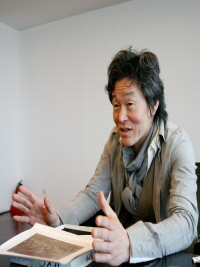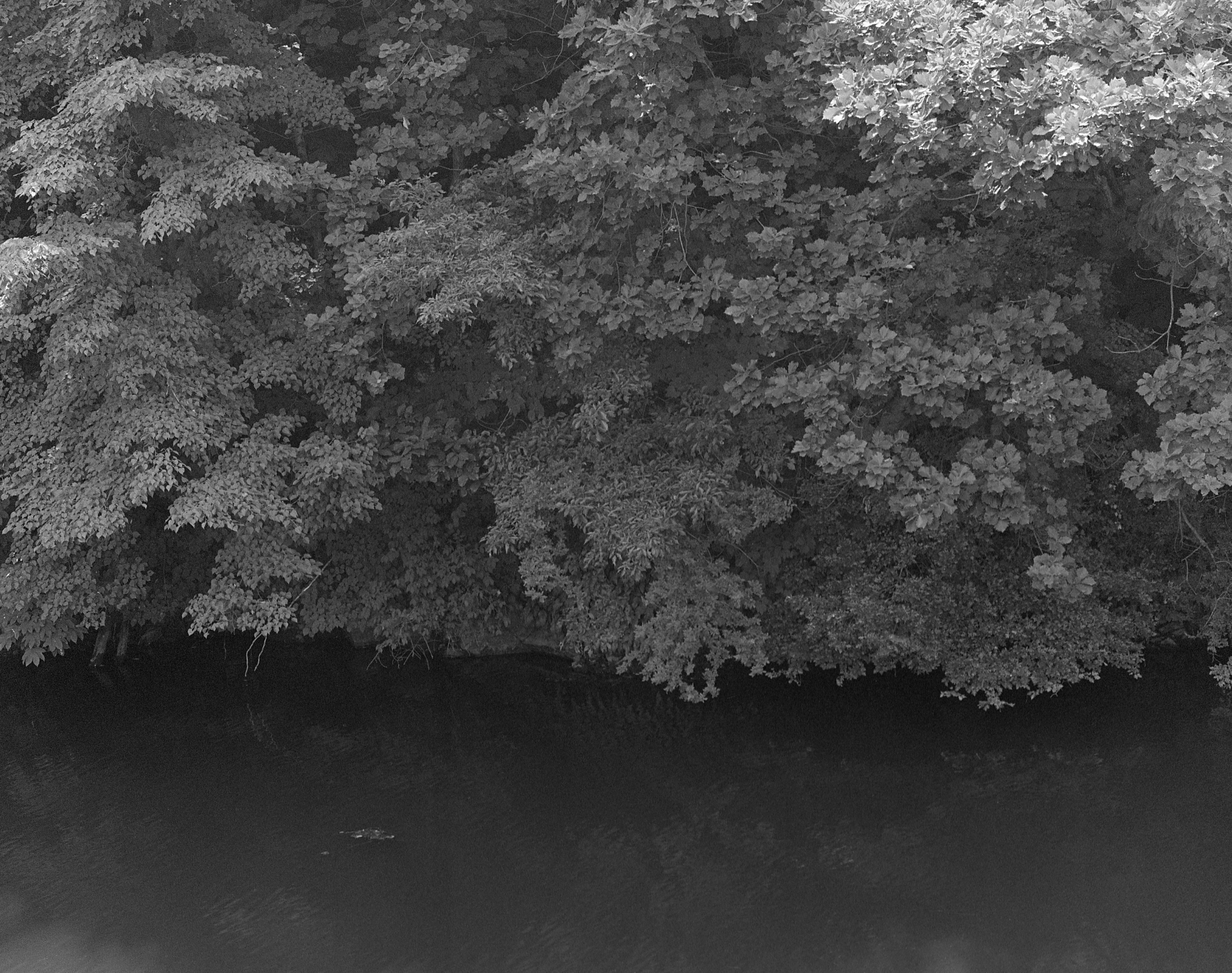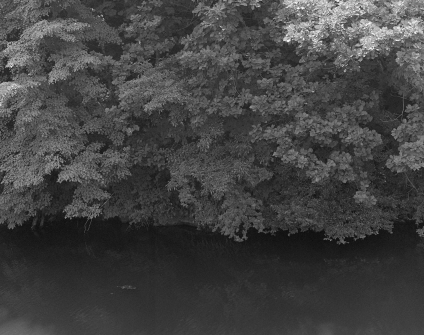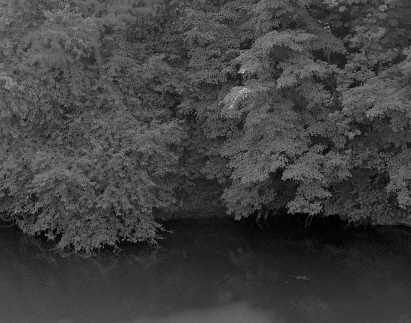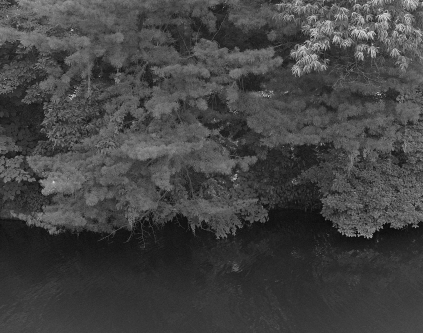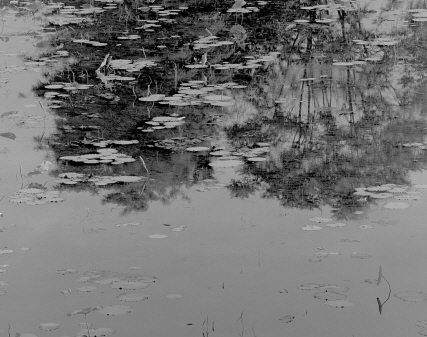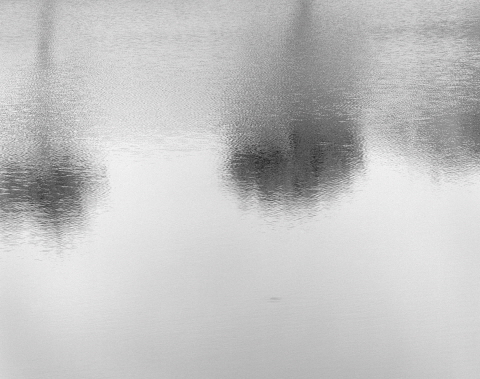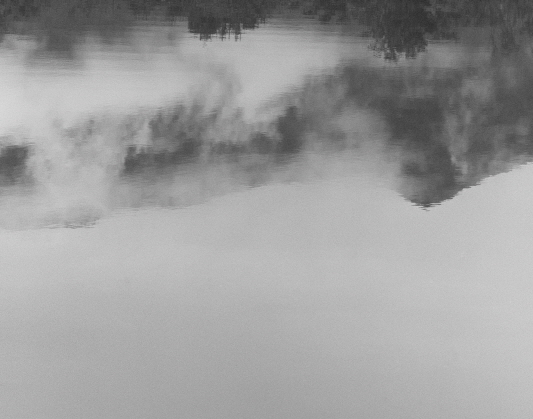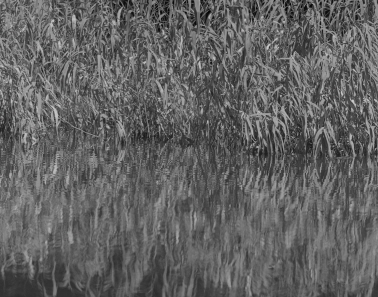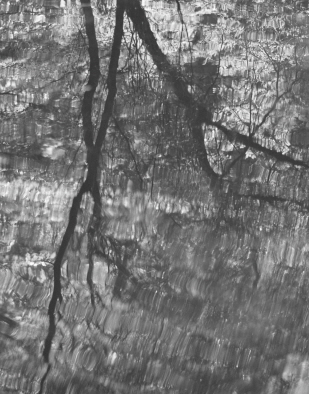Min Byung-hun
The primary impression of Byung Hun Min’s photography is a ‘faintness,’ accompanied by an evocation of the passage of time and forgotten sensations. His art is based on both Asian and Western painting traditions, while his serial photography deals with nature as its subject matter. Mountains covered in snow, a city mired in fog and the sky over open fields, reed beds, darkness, the nude; such actual landscapes of reality are captured by the artist’s instant capture, then recreated as unique images with delicacy and immensely moving abstractions.
Byung Hun Min’s interest centers on the variations and transformations in nature, and his work undergoes a unique reinterpretation of natural phenomena such as the flora, rain, wind, gales, snow, descending and disappearing fog. “When nature is present, we don’t recognize that it’s there. However, when it’s gone, or changed in some way, only then do we realize that it had been around. In other words, only at the moment of loss are memories restored. I’m not talking about something profound. I aim to focus on the small things, the trivial things, the things that change naturally, and I really personally empathize with those elements” Thus Byung Hun Min appreciates and absorbs trivialities that surround him and speaks of his own passionate method of becoming one with nature.
Byung Hun Min works only in monochrome. Shades of grey as rich and as delicate as velvet together with the soft texture of the paper serve to further strengthen his refined and poetic creativity, and exude a beauty that we usually find in watercolors or calligraphy. The artist describes his own work as “akin to the aftertaste of the night’s dream lingering on in the early morning”. To him, everything is a matter of the senses. In other words, the principle challenge is to restore through the printing process the moment the shutter is pressed. Since 1998, he conceptualized and eventually completed his
From a strictly formal perspective, Byung Hun Min’s
A student of engineering, Byung Hun Min later became a self-taught photographer and above else centers his photography to capture ‘the decisive moment’ on camera, much in the manner of Henri Cartier-Bresson. (It would appear that the Korean photographers of the 1970s were profoundly influenced by Henri Cartier-Bresson.) Therefore, it is his conviction that the image initially captured must not be tampered with--to prevent the distortion of reality no modifications should be made. Moreover, as a true believer in ‘pure photography’, Byung Hun Min endeavors to create an all encompassing abstraction with his pool of imagery, whereby one photography after another, one series after the other become fused into a process of synthesis. For example, a snow-covered valley might be reminiscent of the female nude, while a mountaintop might resemble a woman’s skyward-facing breasts. A blizzard blankets a forest, and clouds and mist shed their pale veil over the treetops. While Byung Hun Min makes no alterations to the initial negatives, in the development process he shows no hesitation in applying his handiwork to the task of modifying his photographs. This is his personal way of vividly recreating the images he witnessed, the textures he sensed when taking the photographs, sensibilities that have disappeared.
These belong to the domain of the infinitely minute and the vulnerable, so the artist awaits the right moment and presses the camera shutter the instant when his subconscious commands, and returns to the darkroom to work on the printing processes whereby he relives the momentary experience. Byung Hun Min restlessly waits for the moment when the shades of the printed copy can precisely reflect his moment of inspiration.
Abstract forms, entwined and transformed perspectives, dreary scenery, and the role of the subconscious remind us, as westerners, of surrealist imagery. Nevertheless, Byung Hun Min declares that he has never had a strong interest in European surrealism. In particular, his
Emmanuel de l’Ecotais (Curator of the MAM)
Fantasia Derived from Inner Imagination
We are living in an age when an individual’s emotional experience overrides his narratives. We are in an era when the interpretation of individualized space-time has become important, following the age of consecutively flowing time and measurable space. It is now not enough to discover a new world for a valuable life, and lend meaning to this world. One’s sensibility, differentiating his experience has reached a level of changing his action. To decide what and how he will be absorbed in become ‘his’ own matter, not to be shared with anyone. Photography has been a basis enabling us to interpret space and time arbitrarily, and used as a medium for direct emotional communication. While in the 19th century when photography first emerged, photographs capturing motion reconstituted time, photographs in the following century differentiated the fields of vision with minute particles and apparent depth. Photographs in our age assume a role of stimulating the sensibility of viewers, generating diverse variations. With intensity, Min Byung-hun’s art has created ardent admirers with its sensitive expression of emotion. He has produced photographs sympathizing viewers through his distinctive sensibility. The tone of his pictures is peculiar to the medium of black-and-white photography, signifying a eulogy for nature and communion with others.
That any interpretation of landscape is existential, as it discloses an aspect of experience of space and time, is applicable to Min’s work. Min has addressed the typical subject matter of nature in Landscape with Nothing Special, Island, Weeds, Deep Fog, and Snow Land. He insists on employing the process of analog, black-and-white photography to feature common subject matter distinctively. With delicate beauty, leaves shattered in white on a background of sky; a dark forest gently permeating into a scene; and the black-and-white tone of a thick mist enwrapping the world like an abyss give viewers pure visual delight. This black-and-white tonality is a significant expressive element distinguishing the common and uncommon, general and individual. The artist remains liberal, whether using a way of revealing the delicate difference of brightness in black and white, or adopting a rich grayish tone. The stage of his subtle, delicate immersion in tone adjusted on the basis of nature is worth being praised for its impressive aspect. Photographs were initially black and white, but his world of gray appears unnatural since it features scenes we can never see with bare eyes. The nature encapsulated in Min’s black-and-white photographs make viewers tense. Every moment Min underwent is sensed, by simply standing before his photographs. The processes of communing with nature, cutting it with a keen eye, adjusting the amount of light, and regulating the concentration of silver on photographic paper appear vivid in each photograph.
There is a unique aspect sensed in his work. Gray with a certain brightness covers an entire scene, as if forming a layer. The even layer enwraps the viewer’s mind and eye. Whether it is snow flurries, sky without clouds, fog covering the eyes, or waterfalls raising spray, the gray distances reality and triggers imagination. His Waterfall series, featuring falling water streams using a neutral shutter speed, represents a sense of movement similar to what we see with our eyes. While the photographs of waterfalls familiar to us appear overstated, due to long exposure time; or dynamic, owing to a short exposure time, the water streams in his photographs flow down at a proper, middle speed. As the sense of movement is so realistic viewers may feel an optical illusion, and be engrossed in the magnificently flowing water streams when gazing at the waterfall, hung like a curtain. Gray is also seen between the water flows. The strictness of ‘middleness,’ rendered by layers of gray, enables viewers to undergo a time of static contemplation.
Awakened by the senses, immersion and imagination can be a most vivid experience. This is why immersion involving the five senses can bring about imagination unrestricted by a specific place or time. There is no one who asks before Min’s waterfalls “Was this waterfall taken in summer or winter?” and, “Does the water belong to Gyeongsang Province or Gangwon Province?” The work of capturing water bubbles appears distant from the subject matter of a waterfall. As the water bubbles are variable, we remember them through our tactile sense. The bubbles tickle our fingertips and tiptoes. If an aural impression is added to this tactile experience, a simple waterfall experienced as a child; a magnificent waterfall in a film where martyrs toss their bodies; and a clandestine waterfall one spends a torturous time to attain a high level of singing, enter the appreciators’ world. Min’s photographs make viewers imagine more than waterfalls. The visual elements, transferred to a black-and-white square frame, make possible a three-dimensional emotional experience, which continues into the imagination, triggering the brain vividly and intensively. Although the artist put his whole heart into encapsulating what he underwent before a waterfall, the force of his work derives from the fact that no traces of the artist as observer is in his work. No observer exists in his work. Instead, his work asks us to be the progenitors of the world, allowing us to take up a place. So, anyone who views his photographs can be the subject of his senses in a completely independent space, not interrupted by anyone, and reach an inner imagination through sensuous immersion.
Min’s landscape photographs still remain attractive with their synesthetic expression, encompassing the senses of sight, touch, and hearing, despite many of other works being based on ingenious ideas and concepts. While his previous pieces were characterized by their painting-like quality, derived from a use of mat printing paper, his recent works are mostly made on printing paper with a clear gloss. So now his work’s technical strictness stands out. He goes beyond any style in challenging the medium of photography and competing with nature. Only those realizing the value of fierceness may discuss the stage of overcoming a level. We are all in his water stream.
Suejin SHIN, Ph.D. (Psychology of Photography)






